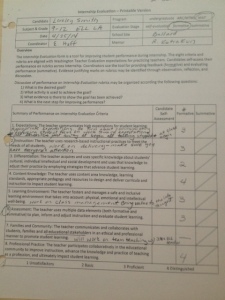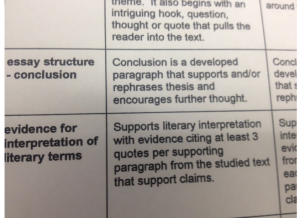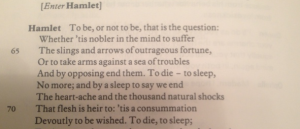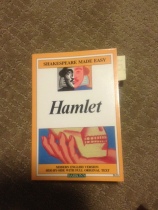E1-Exemplifying professionally-informed, growth-centered practice to me means continuing education to improve teaching skills, keeping up on current trends in education, and participating in educational professional organizations to develop growth and perform leadership roles. It also means building relationships with students and getting their feedback in order to know where to focus professionally to become an effective teacher.
Maybe it is because I personally like taking surveys that the student survey exercise resonated with me. I found the survey results eye-opening and helpful. By pin pointing specific areas to obtain feedback anonymously from the students directly, I was able to consider where the students were coming from, and reflect on ways to make improvements in my teaching practice. Knowing what areas I want to improve upon for overall student growth allows me to consider how I will go about obtaining additional skills, knowledge, and training in my teaching strategies and methodologies.
For example, the survey showed that 37% of students felt the teacher “somewhat” made them think first before she answered their questions. I would like to see an increase in that figure. By having a set goal in mind, say 60% “mostly” feel the teacher makes them think first before supplying the answers, I can research and experiment with ways to improve my teaching practice and strategies. If I am unsure how to go about achieving this goal, I can reach out to professional organizations that I belong to, online educational communities with which I have registered, and even find periodicals and books on the subject to gain insight and knowledge.
A growth-centered practice includes taking the information obtained from students, parents, peers, and administrations and reflecting on how I can improve as a teacher. Gathering survey results and organizing them in a way to track improvements and areas in greater need for attention can help me as a professional stay abreast of my students’ needs. Growing professionally should never cease regardless of the career, but especially in the area of education. Each student is different with a different set of issues, needs, and personality. In addition, student culture as a whole changes over time. I was honestly shocked at the usage of cell phones among students in the classroom. “Workplaces and schools actually encourage this type of multi-tasking,” (Medina, 2008). This cultural shift in our society and schools is something I need to learn to embrace, or at the very least, deal with constructively. Educators need to be flexible and keep on top of new strategies and trends in the industry. By participating in professional organizations and having support groups to help me learn how best to work with our student population and incorporate affective strategies, I will continue to learn and grow in my practice and develop successful students.
Reference:
Medina, J. (2008). Brain rules: 12 principles for surviving and thriving at work, home, and school. Pear Press.















